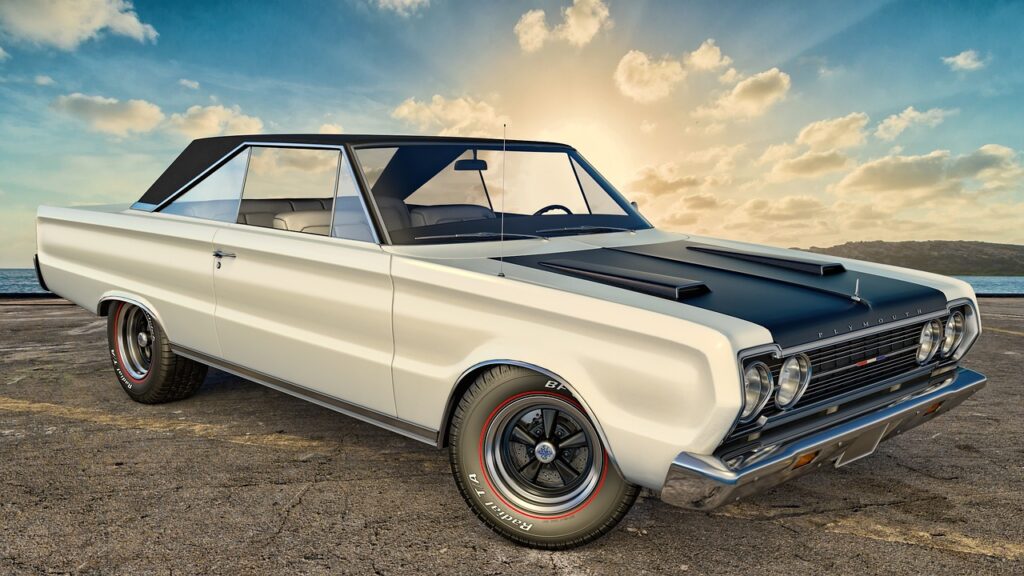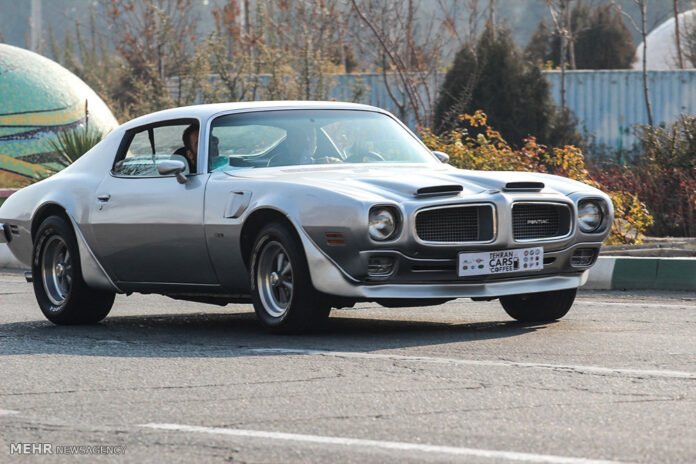The thunderous growl of a muscle car’s engine is an experience that instinctively makes every head turn on the high street. There’s an undeniable charm to these mechanical titans that ensnares hearts and fuels daydreams, embodying a unique blend of raw power, performance, and style. They are far more than mere transport; they are enduring emblems of power and freedom, deeply embedded in the fabric of American identity.
Originating in the late 1940s and gaining immense popularity throughout the 1960s and 1970s, muscle cars not only influenced the automotive industry but also reflected the socio-economic landscape of their time. This era was characterized by post-war optimism, booming economies, and a vibrant youth culture eager for freedom and self-expression. Automakers brilliantly capitalized on this ethos, crafting vehicles that were not only fast but also visually striking and, crucially, attainable for the average driver.
As we delve deep into their rich history and cultural significance, we understand why these formidable autos have left an indelible mark on American car culture. From their fierce competition among manufacturers to their starring roles in film and television, the story of muscle cars is a fascinating journey through the evolution of American automotive history. Get ready to explore the specific models that ignited this roaring revolution and profoundly shaped the American driving experience.

1. **Pontiac GTO: The Pioneer of the Muscle Car Era** The Pontiac GTO holds a distinguished place in automotive history, widely recognized as the pioneer and catalyst for the entire muscle car movement. Launched in 1964, it broke new ground by combining a mid-sized body with a powerful engine, effectively setting a new standard for performance vehicles that others would quickly follow. This innovative approach transformed what was once just an option package for the Pontiac Tempest into a standalone legend.
Its immediate success prompted other manufacturers to swiftly develop their own high-performance models, leading to a vibrant and competitive market. The GTO was more than just a car; it was a statement, offering exhilarating speed and raw power at a price point accessible to the average consumer. This blend of performance and affordability made it an instant hit, especially among the burgeoning youth culture.
The GTO embodied the rebellious spirit and desire for independence prevalent among young people in the 1960s. It wasn’t merely a mode of transportation but a symbol of personal identity and American engineering prowess. Its emergence clearly showcased a growing consumer demand for vehicles that offered a potent blend of speed, power, and aggressive styling.
By igniting the muscle car craze, the Pontiac GTO laid the foundational groundwork for a cultural shift in the automotive landscape. Its success demonstrated that there was a massive market for high-performance cars that were within reach of many Americans, making the thrill of powerful driving an attainable dream. The GTO’s legacy as the original muscle car remains undisputed, a testament to its visionary design and profound market impact.
Car Model Information: 1966 Pontiac GTO Coupe
Name: Pontiac GTO
Caption: 2005 Pontiac GTO
Manufacturer: Pontiac (automobile),Holden
Class: Mid-size car,Compact car,Mid-size car
Production: 1963–1974,2003–2006
Predecessor: Pontiac Tempest
Layout: Front-engine, rear-wheel-drive layout
ModelYears: 1964-1974 2004-2006
Categories: 1970s cars, 2000s cars, All articles with unsourced statements, Articles with short description, Articles with unsourced statements from October 2008
Summary: The Pontiac GTO is a front-engine, rear-drive, two-door, and four-passenger automobile manufactured and marketed by the Pontiac division of General Motors over four generations from 1963 until 1974 in the United States — with a fifth generation made by GM’s Australian subsidiary, Holden, for the 2004 through 2006 model years.
The first generation of the GTO is credited with popularizing the muscle car market segment in the 1960s. Some consider the Pontiac GTO to have started the trend with all four domestic automakers offering a variety of competing models.
For the 1964 and 1965 model years, the GTO was an optional package on the intermediate-sized Pontiac LeMans. The 1964 GTO vehicle identification number (VIN) started with 22, while the 1965 GTO VIN began with 237. The GTO was designated as a separate Pontiac model from 1966 through 1971 (VIN 242…). It became an optional package again for the 1972 and 1973 intermediate LeMans. For 1974, the GTO was an optional trim package on the compact-sized Ventura.
The GTO model was revived for the 2004 through 2006 model years as a captive import for Pontiac, a left-hand drive version of the Holden Monaro, itself a coupé variant of the Holden Commodore.
Get more information about: Pontiac GTO
Buying a high-performing used car >>>
Brand: Pontiac Model: GTO
Price: $59,991 Mileage: 4,408 mi.
Read more about: Boomers, Get Ready to Rev! These 12 Iconic ’60s Car Models Still Drive Our Dreams
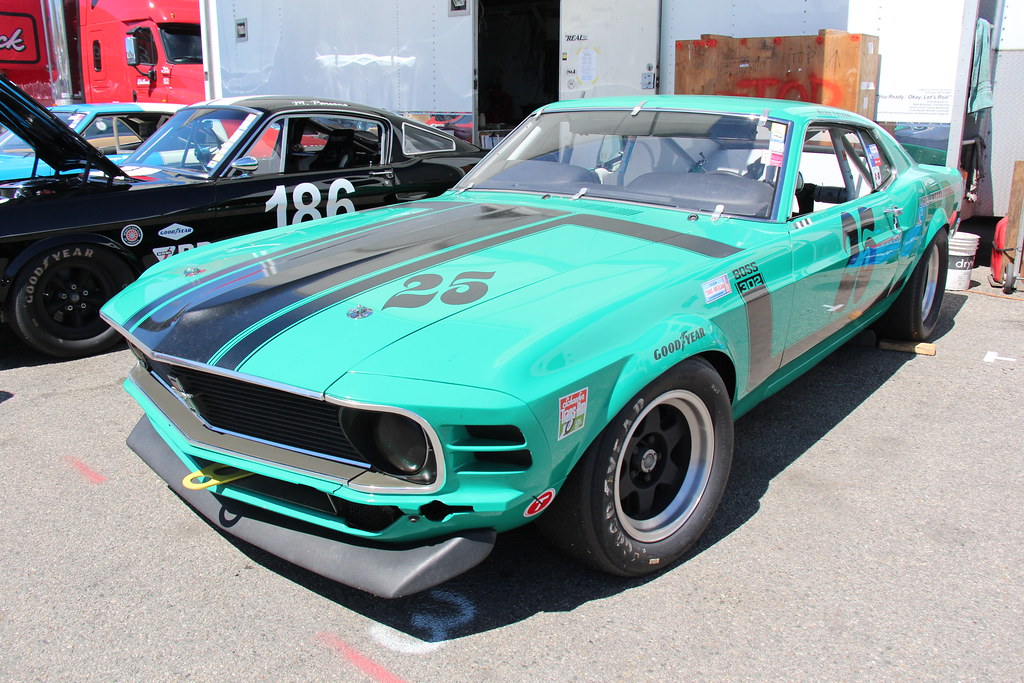
2. **Ford Mustang: The Instant Classic and Youth Icon** Launched in 1964, the Ford Mustang became an instant classic, capturing the imagination of a generation and setting the stage for an entire era’s love for performance cars. Its sporty design, coupled with an affordable price tag, made it incredibly accessible to the youth, quickly establishing it as a symbol of the aspirational American dream. The Mustang wasn’t just a car; it was a cultural phenomenon that defined personal identity and freedom.
The Mustang’s introduction effectively established the muscle car segment, offering a compelling blend of style, performance, and value that resonated deeply with the burgeoning Baby Boomer generation. Its sleek lines and customizable options allowed drivers to express individuality, transforming the act of driving into a personal statement. This accessibility contributed significantly to its meteoric rise in popularity.
Its enduring appeal was further cemented through popular culture. Films such as Steve McQueen’s iconic “Bullitt” in 1968 immortalized the Ford Mustang GT in cinematic history, showcasing its rugged performance in one of the most legendary chase scenes ever filmed. This cinematic presence solidified the Mustang’s status as an emblem of cool and relentless pursuit, shaping public perception for decades to come.
Even in contemporary media, the Mustang continues to make its mark, demonstrating its timeless allure. The “Fast and the Furious” franchise, beginning in 2001, brought muscle cars back into the spotlight, and while Dominic Toretto’s Dodge Charger often took center stage, the Mustang’s influence on the franchise’s ethos of speed and modification is undeniable. The Mustang’s ability to transcend generations, appealing to both classic enthusiasts and new adopters, underscores its profound and lasting impact on American car culture.
Car Model Information: 2024 Ford Mustang EcoBoost Premium
Name: Ford Mustang
Caption: 2024 Ford Mustang GT Convertible
Aka: Ford T5 (Germany)
Manufacturer: Ford Motor Company
Production: March 1964 – present
ModelYears: 1965–present
Class: Unbulleted list
BodyStyle: Unbulleted list
Layout: Front-engine, rear-wheel-drive layout
Categories: 1970s cars, 1980s cars, 1990s cars, 2+2 coupés, 2000s cars
Summary: The Ford Mustang is an American automobile manufactured and marketed by Ford since 1964, as Ford’s longest nameplate in continuous production. Currently in its seventh generation, it is the fifth-best selling Ford car nameplate. The namesake of the “pony car” automobile segment, the Mustang was developed as a highly styled line of sporty coupes and convertibles derived from existing model lines, initially distinguished by its pronounced “long hood, short deck” proportions.
Originally predicted to sell 100,000 vehicles yearly, the 1965 Mustang became the most successful vehicle launch since the 1927 Model A. Introduced on April 17, 1964 (16 days after the Plymouth Barracuda), over 400,000 units were sold in its first year; the one-millionth Mustang was sold within two years of its launch. In August 2018, Ford produced the 10-millionth Mustang; matching the first 1965 Mustang, the vehicle was a 2019 Wimbledon White convertible with a V8 engine.
The success of the Mustang launch led to multiple competitors from other American manufacturers, including the Chevrolet Camaro and Pontiac Firebird (1967), AMC Javelin (1968), and Dodge Challenger (1970). It also competed with the Plymouth Barracuda, which was launched around the same time. The Mustang also had an effect on designs of coupes worldwide, leading to the marketing of the Toyota Celica and Ford Capri in the United States (the latter, by Lincoln-Mercury). The Mercury Cougar was launched in 1967 as a unique-bodied higher-trim alternative to the Mustang; during the 1970s, it included more features and was marketed as a personal luxury car.
From 1965 until 2004, the Mustang shared chassis commonality with other Ford model lines, staying rear-wheel-drive throughout its production. From 1965 to 1973, the Mustang was derived from the 1960 Ford Falcon compact. From 1974 until 1978, the Mustang (denoted Mustang II) was a longer-wheelbase version of the Ford Pinto. From 1979 until 2004, the Mustang shared its Fox platform chassis with 14 other Ford vehicles (becoming the final one to use the Fox architecture). Since 2005, Ford has produced two generations of the Mustang, each using a distinct platform unique to the model line.
Through its production, multiple nameplates have been associated with the Ford Mustang series, including GT, Mach 1, Boss 302/429, Cobra (separate from Shelby Cobra), and Bullitt, along with “5.0” fender badging (denoting 4.9 L OHV or 5.0 L DOHC V8 engines).
Get more information about: Ford Mustang
Buying a high-performing used car >>>
Brand: Ford Model: Mustang
Price: $29,889 Mileage: 41,486 mi.
Read more about: Boomers, Get Ready to Rev! These 12 Iconic ’60s Car Models Still Drive Our Dreams

3. **Dodge Charger: Raw Power and Cinematic Stardom** The Dodge Charger, particularly the iconic 1969 model, solidified its place in popular culture through unforgettable appearances in films like “Bullitt” and the beloved television series “The Dukes of Hazzard.” This formidable muscle car embodies raw power and aggressive styling, making it a quintessential symbol of American muscle both on the road and in cinema. Its menacing presence and undeniable performance capabilities quickly made it a fan favorite.
In “Bullitt,” the Charger engaged in a legendary chase scene with Steve McQueen’s Ford Mustang GT, setting a new benchmark for action sequences and cementing its status as an emblem of fierce performance. This cinematic portrayal transformed the Charger from a mere vehicle into a character itself, representing a relentless and powerful force on screen. The visual impact of these films left an indelible mark on popular culture, elevating the Charger to iconic status.
Beyond the big screen, the Charger became a dominant force in the surge of drag racing popularity during the muscle car boom. Legal drag strips across America provided a stage for cars like the Dodge Charger to shine, attracting young drivers seeking thrills and excitement. Its immense horsepower and sleek design made it a formidable competitor in quarter-mile sprints, solidifying its reputation as a high-performance machine.
The “Fast and the Furious” series further cemented the Dodge Charger’s legacy for a new generation. Dominic Toretto’s Dodge Charger became central to the series’ identity, representing not just raw power and speed, but also deeper themes of family ties, loyalty, and rebellion against authority. These modern portrayals ensure that the Charger’s allure persists, bridging generational gaps and maintaining its iconic status as a symbol of American muscle and freedom.
Car Model Information: 2023 Dodge Charger SRT Hellcat Widebody Jailbreak
Name: Dodge Charger
Caption: 1969 Dodge Charger
Manufacturer: Dodge
Production: 1966–1978,1981–1987,2005–present
ModelYears: 1966–1978,1982–1987,2006–present
Categories: 1960s cars, 1970s cars, 1980s cars, 2000s cars, 2010s cars
Summary: The Dodge Charger is a model of automobile marketed by Dodge in various forms over eight generations since 1966.
The first Charger was a show car in 1964. A 1965 Charger II concept car resembled the 1966 production version.
In the United States, the Charger nameplate has been used on mid-size cars, personal luxury coupes, subcompact hatchbacks, and full-size sedans.
Get more information about: Dodge Charger
Buying a high-performing used car >>>
Brand: Dodge Model: Charger
Price: $94,975 Mileage: 4,260 mi.

4. **Chevrolet Camaro: The Fierce Competitor** Introduced in 1966, the Chevrolet Camaro entered the muscle car arena as a fierce competitor to the highly successful Ford Mustang. From its inception, the Camaro was designed to offer a powerful and stylish alternative, providing various performance options that allowed drivers to customize their experience and truly make the vehicle their own. This commitment to choice and performance quickly garnered a loyal following.
The Camaro, much like its rivals, resonated deeply with the youth culture of the 1960s, embodying the desire for speed and excitement on the open road. Its sleek designs combined with immense horsepower appealed to a demographic eager for powerful vehicles that also made a strong visual statement. Chevrolet’s entry into the muscle car craze significantly intensified the “horsepower war” among manufacturers.
Throughout the decades, the Chevrolet Camaro has maintained its status as a quintessential American muscle car, representing the enduring passion for power and performance. It has evolved with the times, adapting to changing automotive technologies and consumer preferences while consistently honoring its heritage. This adaptability has allowed it to remain relevant and desirable across multiple generations of enthusiasts.
The Camaro’s consistent presence in the automotive landscape and its continuous reintroduction with modern engineering and technology highlight its significant impact. It stands as a testament to the competitive spirit that defined the muscle car era, constantly pushing boundaries and inspiring countless enthusiasts to modify and personalize their vehicles. The Chevrolet Camaro’s legacy is one of sustained excellence and unwavering appeal in the pursuit of American muscle.
Car Model Information: 1968 Chevrolet Camaro
Name: Chevrolet Camaro
Manufacturer: Chevrolet
Production: 1966–2002,2009–2023
ModelYears: 1967–2002,2010–2024
Class: Pony car
BodyStyle: coupe,convertible
Platform: GM F platform,GM Zeta platform,GM Alpha platform
Layout: Front-engine, rear-wheel-drive layout
Categories: 1970s cars, 1980s cars, 1990s cars, 2+2 coupés, 2000s cars
Summary: The Chevrolet Camaro is a mid-size American automobile manufactured by Chevrolet, classified as a pony car. It first went on sale on September 29, 1966, for the 1967 model year and was designed to compete with the Ford Mustang. The Camaro shared its platform and major components with the Firebird, produced by General Motors’ Pontiac division that was also introduced for the 1967 model year.
Four distinct generations of the Camaro were developed before production ended in 2002. The nameplate was revived on a concept car that evolved into the fifth-generation Camaro; production started on March 16, 2009.
Production of the sixth generation of the Camaro ended in December 2023, for the 2024 model year.
Get more information about: Chevrolet Camaro
Buying a high-performing used car >>>
Brand: Chevrolet Model: Camaro
Price: $79,980 Mileage: 1,713 mi.
Read more about: Boomers, Get Ready to Rev! These 12 Iconic ’60s Car Models Still Drive Our Dreams

5. **Plymouth Barracuda: The Distinctive Early Challenger** Transitioning from the foundational muscle cars, the Plymouth Barracuda carves its own unique niche in automotive history, representing the distinct character of the early muscle car era. Launched around the same period as its contemporaries, the Barracuda immediately distinguished itself with a design that blended aggressive styling with unique aesthetic choices, appealing directly to those seeking both speed and an unmistakable presence on the road. It wasn’t just about raw power; it was about presenting that power in a package that stood out.
The Barracuda quickly became a formidable force in the competitive landscape of the 1960s, a period defined by manufacturers locked in a fierce “horsepower war.” Its powerful V8 engines, a hallmark of the muscle car definition, provided the kind of exhilarating performance that attracted young drivers eager for thrills and excitement. On the legal drag strips that proliferated across America, the Barracuda, much like its Mopar brethren, proved its mettle in quarter-mile sprints, solidifying its reputation as a high-performance machine and a dominant force in these burgeoning races.
Beyond its straight-line speed, the Plymouth Barracuda’s unique design contributed significantly to its iconic status. While the context broadly highlights chrome accents and tailfins in muscle car aesthetics, the Barracuda possessed a distinctive profile that set it apart. Its commitment to combining powerful mechanics with a clear visual identity made it more than just a car; it was a statement of individuality, resonating deeply with the youth culture’s desire for self-expression and independence that defined the 1960s.
The Barracuda’s impact on American car culture is evident in how it helped shape the perception of what a muscle car could be. It showcased that a vehicle could offer intense performance without sacrificing a unique and memorable design. This blend of attributes ensured its place in the hearts of enthusiasts and in the annals of automotive history, a testament to the era’s innovation and the relentless pursuit of speed and style.
Car Model Information: 1971 Plymouth Barracuda
Caption: 1970 Hardtop Coupe
Name: Plymouth Barracuda
Manufacturer: Plymouth (automobile)
Production: 1964–1974
Assembly: Fenton, Missouri,Hamtramck, Michigan,Maywood, California,Windsor, Ontario
Layout: Front-engine, rear-wheel drive layout
Class: Pony car
Categories: 1970s cars, All articles with dead external links, All articles with unsourced statements, Articles with dead external links from February 2018, Articles with dead external links from January 2022
Summary: The Plymouth Barracuda is a two-door pony car that was manufactured by Chrysler Corporation from 1964 through 1974 model years.
The first-generation Barracuda was based on the Chrysler A-body and was offered from 1964 until 1966. A two-door hardtop (no B-pillar) fastback design, it shared a great majority of parts and bodywork with the Plymouth Valiant, except for the distinctive wraparound rear glass.
The second-generation Barracuda, though still Valiant-based, was heavily redesigned. Built from 1967 through 1969, it was available as a two-door in fastback, notchback, and convertible versions.
The third generation, offered from 1970 until 1974, was based on the Chrysler E-body, exclusive to it, and the slightly larger Dodge Challenger. A completely new design, the two-door Barracuda was available in hardtop and convertible body styles.
Get more information about: Plymouth Barracuda
Buying a high-performing used car >>>
Brand: Plymouth Model: Barracuda
Price: $54,999 Mileage: 12,468 mi.
Read more about: Boomers, Get Ready to Rev! These 12 Iconic ’60s Car Models Still Drive Our Dreams
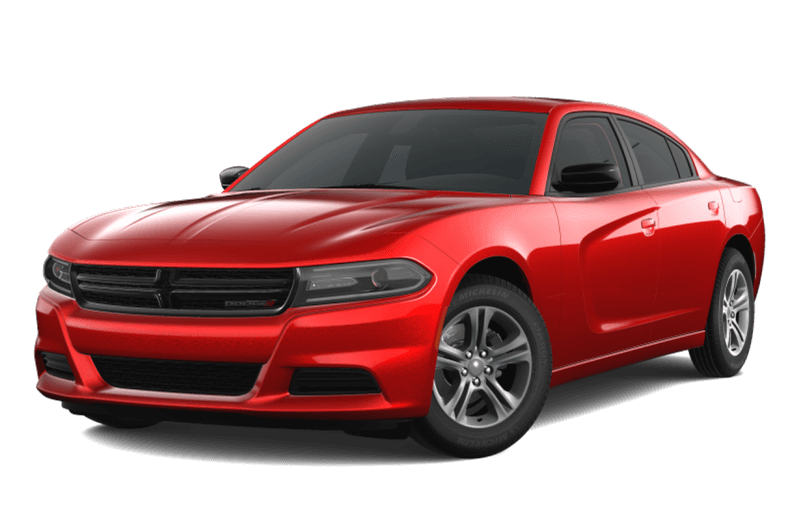
6. **Dodge Challenger: The Resurgent Icon of Modern Muscle** While classic muscle cars set the stage, the Dodge Challenger stands as a powerful testament to the enduring appeal and remarkable resurgence of American muscle in the modern era. After a decline in traditional muscle car production during the 1970s, the late 1990s and early 2000s marked a significant revival. The Challenger, along with other iconic models, roared back into the automotive landscape, reintroducing classic muscle car designs while seamlessly integrating cutting-edge modern engineering and technology. This comeback was not merely a nostalgic nod but a powerful reassertion of its legacy.
The contemporary Challenger perfectly embodies the principle of blending tradition with innovation. It retains the aggressive aesthetics and muscular stance that are characteristic of classic muscle cars, ensuring that its design evokes a powerful sense of nostalgia for enthusiasts. Yet, beneath its iconic exterior lies advanced engineering, powerful V8 engines, and sophisticated fuel management systems, allowing it to meet modern performance expectations while adhering to contemporary efficiency and emission standards. This careful balance ensures its relevance and desirability for a new generation of drivers.
Indeed, the Challenger has played a pivotal role in maintaining the “performance focus” that defines muscle cars. Its powerful engines deliver instant torque and impressive acceleration, thrilling drivers and carrying forward the spirit of the horsepower wars of yesteryear. The passion for American muscle, which the Challenger so powerfully represents, continues to inspire countless enthusiasts to modify and personalize their vehicles, creating a vibrant community centered around performance and individuality, much like the hot rodding subculture of the past.
Looking towards the future, the Challenger, much like its Dodge stablemates, is at the forefront of the evolving automotive landscape. Manufacturers are exploring hybrid and electric muscle car concepts, with examples like the Dodge Charger Daytona SRT concept showcasing how futuristic designs and electric drivetrains can still evoke the raw power and emotion associated with muscle cars. This forward-thinking approach ensures that the essence of American muscle, epitomized by vehicles like the Challenger, will continue to thrive, adapting to new technologies while honoring its formidable heritage.
The Dodge Challenger, therefore, is more than just a car; it is a living symbol of power, freedom, and the relentless pursuit of performance that remains deeply embedded in American car culture. Its ability to bridge generational gaps, appealing to both classic enthusiasts who cherish its roots and new adopters drawn to its modern prowess, underscores its profound and lasting impact as an icon of American automotive excellence.
Car Model Information: 2013 Dodge Challenger SXT
Name: Dodge Challenger
Production: 1969–1974,1977–1983,2008–2023
ModelYears: 1970–1974,1978–1983,2008–2023
Caption: 2015 Dodge Challenger SRT Hellcat
Manufacturer: Dodge
Categories: 1970s cars, 1980s cars, 2000s cars, 2010s cars, 2020s cars
Summary: The Dodge Challenger is the name of three generations of automobiles produced by the American automobile manufacturer Dodge. However, the first use of the Challenger name by Dodge dates back to 1959 for marketing a “value version” of the full-sized Coronet Silver Challenger.
From model years 1970 to 1974, the first-generation Dodge Challenger pony car was built using the Chrysler E platform in hardtop and convertible body styles sharing significant components with the Plymouth Barracuda.
The second generation, from model years 1978 to 1983, was a rebadged Mitsubishi Galant Lambda / Sapporo, a coupe version of an economical compact car.
The third and current generation is a full-size muscle car that was introduced in early 2008 initially as a rival to the evolved fifth generation Ford Mustang and the fifth generation Chevrolet Camaro.
In November 2021, Stellantis announced that the 2023 model year would be the final model year for both the LD Dodge Charger and LA Dodge Challenger, as the company will focus its plans on electric vehicles rather than fossil fuel-powered vehicles, due to tougher emissions standards required by the Environmental Protection Agency for the 2023 model year. Challenger production ended on December 22, 2023, and the Brampton, Ontario, assembly plant will be re-tooled to assemble an electrified successor.
Get more information about: Dodge Challenger
Buying a high-performing used car >>>
Brand: Dodge Model: Challenger
Price: $14,419 Mileage: 60,710 mi.
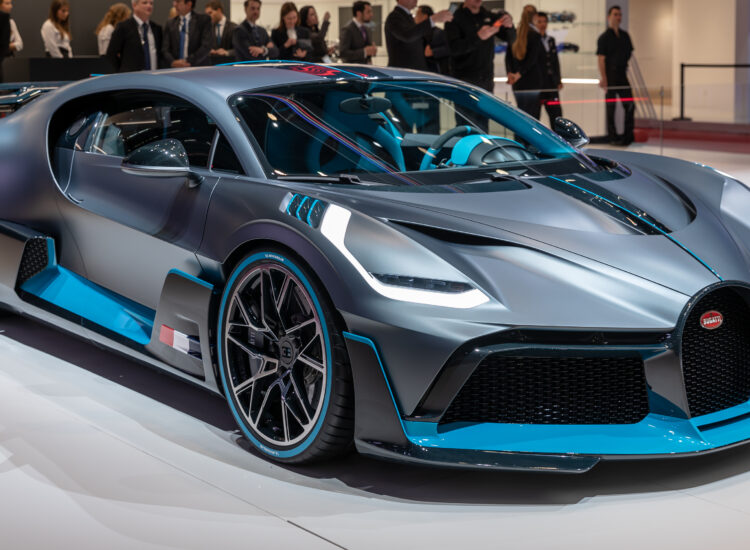
7. **Chevrolet Impala: Aesthetically Influential Grandeur** While often celebrated for their raw power and speed, some muscle cars made an equally profound impact through their sheer aesthetic grandeur and design innovation. The Chevrolet Impala, particularly models from the late 1950s and early 1960s, stands as a prime example of a vehicle that commanded attention not just with its powerful V8 engine options, but with its visually captivating and influential styling. It represented a unique blend of performance, luxury, and distinctive design that contributed significantly to the evolving muscle car narrative.
The Impala truly showcased an era where car design was an art form. Its sleek tailfin designs, though reaching their peak popularity in the 1950s, continued to influence the muscle car era, providing an aerodynamic appearance that evoked a sense of futuristic elegance. These design choices were not merely cosmetic; they imbued the vehicle with a sense of forward momentum and sophistication, reflecting the optimistic spirit of the Space Age. The Impala’s chrome accents, prominent on bumpers, grilles, and trim pieces, further amplified its shiny sophistication, making it visually striking on city streets and at car exhibitions alike.
Beneath its striking exterior, the Impala offered a range of powerful engine options, including robust V8 configurations, characteristic of the era’s demand for high-performance vehicles. While it might have offered a more comfortable, full-size driving experience compared to the lighter, more focused muscle cars, its powerful variants firmly placed it within the context of the “horsepower war.” It appealed to a demographic that desired potent performance without compromising on space, style, or a touch of automotive grandeur, thus broadening the appeal of powerful American cars.
The cultural impact of the Chevrolet Impala extended beyond its performance metrics, influencing music, cinema, and lifestyle. Its presence in popular culture, from cruising anthems to films that captured the essence of American youth, solidified its status as an enduring icon. The Impala became synonymous with the freedom of the open road and represented a specific aspirational lifestyle, showcasing how muscle cars were integrated into the broader American dream, embodying personal achievement and autonomy during a period of economic prosperity.
Even today, the Impala’s legacy endures, celebrated at classic car shows and revered by enthusiasts for its timeless design and historical significance. It is a testament to how vehicles can transcend mere transportation to become cultural touchstones, merging the love for powerful automobiles with cultural identity. The Impala beautifully encapsulates a period when American automotive engineering reached new heights, proving that grandeur and raw power could indeed go hand-in-hand.
Car Model Information: 1966 Chevrolet Impala SS
Name: Chevrolet Impala
Caption: Fourth generation model (1967)
Manufacturer: Chevrolet
Production: 1957–1985,1994–1996,1999–2020
ModelYears: 1958–1985,1994–1996,2000–2020
Predecessor: Chevrolet Bel Air,Chevrolet Lumina#Second generation (1995–2001)
Successor: Chevrolet SS,Chevrolet Caprice
Platform: GM B platform,GM W platform,GM W platform (GMX211) (2005–2013),GM Epsilon platform#Epsilon II
Class: Full-size car,Mid-size car
Layout: Front-engine, rear-wheel-drive layout,Front-engine, front-wheel-drive layout
Categories: 1960s cars, 1970s cars, 1980s cars, 1990s cars, 2000s cars
Summary: The Chevrolet Impala () is a full-size car that was built by Chevrolet for model years 1958 to 1985, 1994 to 1996, and 2000 to 2020. The Impala was Chevrolet’s popular flagship passenger car and was among the better-selling American-made automobiles in the United States.
For its debut in 1958, the Impala was distinguished from other models by its symmetrical triple taillights. The Chevrolet Caprice was introduced as a top-line Impala Sport Sedan for model year 1965, later becoming a separate series positioned above the Impala in 1966, which, in turn, remained above the Chevrolet Bel Air and the Chevrolet Biscayne. The Impala continued as Chevrolet’s most popular full-sized model through the mid-1980s. Between 1994 and 1996, the Impala was revised as a 5.7-liter V8–powered version of the Chevrolet Caprice Classic sedan.
In 2000, the Impala was reintroduced again as a mainstream front-wheel drive car. In February 2014, the 2014 Impala ranked No. 1 among Affordable Large Cars in U.S. News & World Report’s rankings. When the 10th generation of the Impala was introduced for the 2014 model year, the 9th generation was rebadged as the Impala Limited and sold only to fleet customers through 2016. During that time, both versions were sold in the United States and Canada. The 10th-generation Impala was also sold in the Middle East and South Korea.
Get more information about: Chevrolet Impala
Buying a high-performing used car >>>
Brand: Chevrolet Model: Impala
Price: $56,991 Mileage: 51,426 mi.
As we conclude our journey through the annals of muscle car history, it becomes abundantly clear that these vehicles are far more than just machines of speed and power. From the pioneering Pontiac GTO to the aesthetically influential Chevrolet Impala, each model we’ve explored has left an indelible mark, not only on the automotive industry but on the very fabric of American culture. They symbolize freedom, rebellion, innovation, and a relentless pursuit of performance, constantly evolving to meet new challenges and captivate successive generations. Their enduring presence in popular culture, from classic films to modern media, ensures that the thunderous growl of a muscle car engine will continue to stir hearts, cementing their legacy as true icons of American tradition and a testament to an exhilarating era of automotive prowess. The muscle car saga continues, forever intertwined with the American spirit, promising a future as dynamic and powerful as their storied past.

